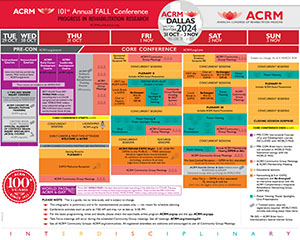Not registered yet? Register and SAVE 20% use code "finaldays20" at checkout. DETAILS: ACRM.org/finaldays20
QUESTIONS? --> meetings@ACRM.org
Research Paper
Measurement
Military and Veterans Affairs
Repeatability and Validity of the Prosthetic Observational Gait Scale (POGS) in Patients with Bilateral Lower Limb Amputations 4345
Friday, November 1, 2024
3:30 PM - 3:45 PM
Location: ROOM: Cortez D REGION: Tower Lobby Level >>> DIRECTIONS: From ACRM Registration desk, face the elephants and turn right. Proceed past the lobby elevators and turn right to enter the West Wing. Proceed down the corridor, turn right and then left. Proceed past the restrooms to the end of the hall and turn right. Cortez D is the last room on the left.

Oleh Burii, n/a
Physical therapist
Department of physical therapy
Vynnyky, L'vivs'ka Oblast', Ukraine
Presenting Author(s)
Based on a study conducted at the Superhumans Center in Lviv, Ukraine, our session addresses key limitations of POGS, emphasizing intraobserver repeatability and interobserver agreement issues. Ideal for physical therapists, prosthetists, clinical researchers, and military healthcare professionals, this presentation explores the implications of variability in gait assessment for clinical practice. Discover how integrating instrumental video analysis can enhance evaluation accuracy and consistency, aligning with the study's recommendation. Gain valuable insights to optimize patient care and rehabilitation strategies in this specialized field. Don't miss this opportunity to stay at the forefront of advancements in amputee rehabilitation.
Learning Objectives:
- Upon completion, participants will be able to list and describe the key limitations of the Prosthetic Observational Gait Scale (POGS) in individuals with bilateral lower limb amputations, emphasizing the issues related to intraobserver repeatability and interobserver agreement identified in the study.
- Upon completion, participants will be able to define and differentiate between intraobserver repeatability and interobserver repeatability in the context of gait assessment, and explain how these factors impact the reliability of the POGS in clinical practice for individuals with bilateral lower limb amputations.
- Upon completion, participants will be able to propose and justify the integration of instrumental video analysis as a complementary method to enhance gait assessment in individuals with bilateral lower limb amputations, addressing the concerns raised about the reliability of POGS and acknowledging the need for a more objective and consistent evaluation approach.
Disclosure(s):
Oleh Burii: No financial relationships to disclose

.jpg)
.jpg)
.jpg)
